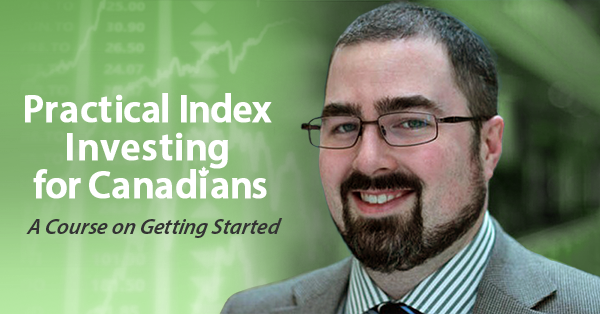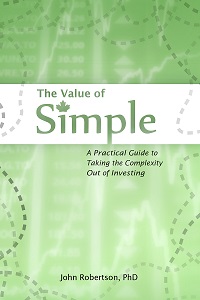A rare post these days on active investing. Perhaps a good object lesson in why indexing is so much easier.
I just got some mail from Dundee. Apparently with all the Star Wars excitement they wanted to play a little Darth Vader. “I am altering the deal, pray I don’t alter it any further.” Seriously, this is a kick in the pants for the series 4 preferred shareholders. It’s out of left field, too, which makes me wonder how bad things are behind the scenes that they need to pull these shenanigans.
A step back for some context: Dundee Corp. is a large holding company. They have a number of preferred share classes, including this weirdo series 4 that trades under the symbol DC.PR.C, which is one of those rare cases with a maturity date the shareholder can stick to: in June 2016, you could (before this proposed change) make the company buy it back for you at the face value of $17.84. I got the idea from Nelson and Divestor, and watched it for a while, and one week it was available at $17.10. I had no other ideas for some cash in my active portfolio (in large part because I’ve had no time to do any research), and thought it was a good place to basically park some cash for a few months and get a ~8% return (which would be even better annualized because it’s not a full year until June 2016).
Well, here comes Dundee saying they don’t want to have to commit the cash to redeeming those preferreds. They had a number of options in that case, including creating a new class of preferreds, and incentivizing series 4 holders to roll over into those early rather than taking cash in June. But instead they set up this weird forced roll-over to try to catch everyone up, and claim they have the support of many holders to push it through.
And it’s bullshit. Sascha at Divestor has already gone in to how the scheme does not adequately pay the investors for the increased risk of holding these for an additional three years (as you can plainly see by the ~15% plunge in price), and how scummy it is that so much of the consent fee goes to the intermediaries rather than the holders.
But right on page one is the thing that made my blood boil and also made me wonder if they were in so much shit that they needed every last dollar: the deal will convert your old series 4 (worth $17.84 in 2016) into a shiny new series 5 preferred (worth $25.00 in 2019), at a conversion rate of 0.7136 — so far the math works out. But then they added the kicker: any fractional shares you would be owed of series 5 will be forfeit. It’s not big bucks, but the proper thing to do would be to pay out the fractional shares (or even pay out any amount that didn’t make a board lot of 100 series 5 preferreds). It’s just so obviously unfair and petty that I can’t believe they went there. I personally hold 200 shares of series 4, so if this goes through I’m going to have those fairly convert to 142.72 shares of series 5, but that 0.72 fraction will be thrown away. Yeah, it’s $18 so it’s not exactly breaking the bank, but fuck them. It’s *my* $18 and they could have paid it to me in cash (or just not converted me) as would be fair and customary, but in this already-terrible deal they said why not just screw people out of a few bucks here and there — which is what makes me think they must be truly desperate for cash to burn this kind of reputation capital. Because 0.7136 does not evenly divide into most reasonable size board lot amounts of preferreds, virtually every holder will be giving up a few bucks. (If you had an odd lot like 625 shares of series 4, you could evenly convert into 446 series 5, but it’s harder to end up with odd lots like that on an already illiquid stock). And for small retail holders like me, with just a few hundred shares, the consent payment ($44 for me if I vote yes) is only a bit higher than the fractional share taking (100 shares: $9; 200 shares: $18; 300 shares: $2; 400 shares: $11; 500 shares: $20).
To me, this whole thing — extending the terms of a nearly mature preferred, with no minority opt-out, relatively large consent payments to third parties, well below current market spreads, plus stealing the fractional shares — is a reputational mess. I would never do business this way unless I had no other choice, and I have to conclude that this is going to cost them on the spread of every future preferred share they try to issue. So to me, Dundee must be very desperate indeed. Are they facing bankruptcy or a liquidity crisis?
What should I do now, though? I can’t just hulk out and smash stuff. Unfortunately, these sleazy consent payments do set up some nasty game theory situations. I believe that I, and other series 4 holders, would be better off rejecting the deal, getting paid out in June 2016, and then having the choice of buying a new preferred series then (which, given the prices on the other series even before this desperate move, would have offered a higher yield). However, if I vote against the deal and it goes through anyway, I lose out on the consent payment (as rage-inducing as it is). My individual vote of 200 lousy shares is not going to influence the final outcome, especially if management is not bluffing when they say that “the Company has received substantial support for the Arrangement based on confidential consultations with representatives of significant holders of the Series 4 Preferred Shares,” suggesting that I should do the whole Prisoner’s Dilemma thing and vote for the bad deal just to secure my own personal consent payment, while hoping that the other holders vote against it. Or, I can eat the loss and sell into the open market (current bid: $14.65 for a 15% loss). The final option is to try to exercise my rights to dissent.
I have to admit to being confused by the dissent rights section. There is a bold section that I have to get my broker to exercise dissent rights on my behalf or transfer ownership into my name, which sounds like a paperwork nightmare right there. But the main thing is that I can’t find the calculation that will be used for the dissent rights, just that it will be based on the “fair value” determined on the day the Arrangement was adopted. But there’s a lot of ways to interpret “fair value” — it could be the $17.84 face value (yay!) or it could be the market price ($14-ish, or where ever it ends up in January — boo). If I knew it was the former I would likely look into what’s involved in dissenting, but I can’t find a definition or formula for fair value, and nothing else about this deal suggests that what I consider fair will line up with what they will put forward as fair.
And of course I was in this in the first place largely as a stalling tactic because I’ve been stupidly busy and neglecting my active portfolio, and was just looking to park some cash until the summer. So there may be a good argument for taking the loss now and redeploying into some other opportunity, but I haven’t had the chance to look for said opportunity, let alone having one at hand.
Yes, I am also building up my index portfolio, with new money going there. And after the last two years of terrible performance I have already heard plenty of “I’ve heard there’s this good book on index investing by this handsome devil you might like…” Which is totally fair. But for stubbornness or history or family tradition or whatever, I do still have some of my money “actively” invested (scare quotes due to lack of trades and tracking and analysis, etc., particularly over the past two years).


 Questrade: use QPass 356624159378948
Questrade: use QPass 356624159378948 Passiv is a tool that can connect to your Questrade account and make it easier to track and rebalance your portfolio, including the ability to make one-click trades.
Passiv is a tool that can connect to your Questrade account and make it easier to track and rebalance your portfolio, including the ability to make one-click trades.